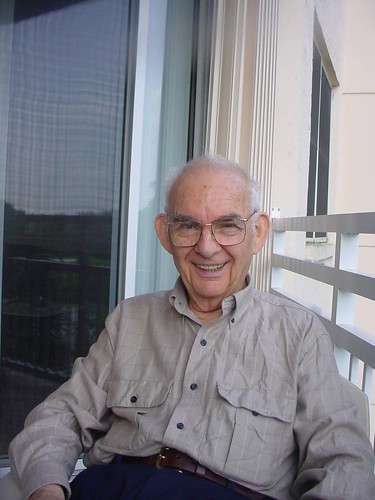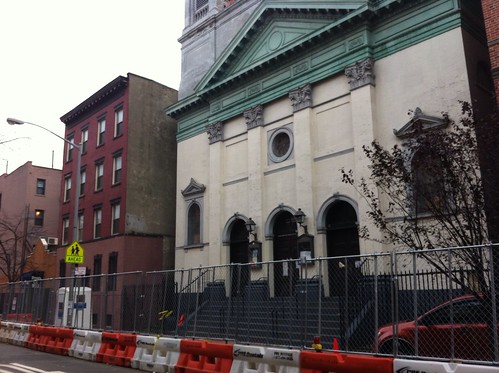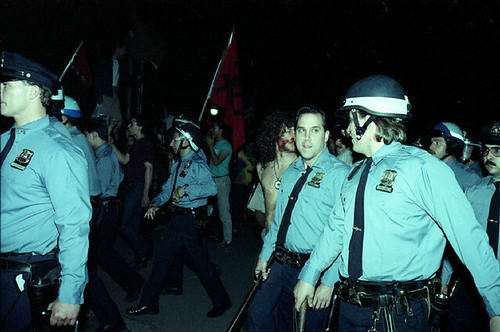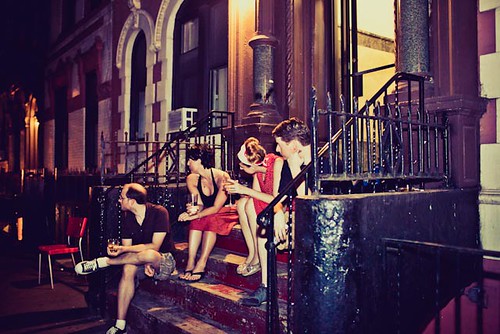For every East Village business that’s opening or closing, dozens are quietly making it. Here’s one of them: Dinosaur Hill.
You don’t have to be a kid to be dazzled by the shop-o-tainment that Dinosaur Hill provides; you just might want to be a little tiny bit careful. “We’re just 450 square feet,” says owner Pam Pier. “So we try to cool excited kids down but just showing them how things work first. There’s a lot of laughter coming out of this place.”
Those who enter Dinosaur Hill, a masterfully curated toyshop at 306 E.9th Street are seeking something thoughtfully amazing; not the made in China big box Toys R Us experience. “That’s a meaningless place to me,” says Ms. Pier. “Small toys stores are so few and most have come and gone. I’m sticking around until they have to carry me away in a box!” We spoke with the “purveyor of fun and wonderments” about how she’s managed to hang in there all these years and keep the neighborhood playful purchasing.
How did Dinosaur Hill come to be?
I started Dinosaur Hill in March of 1983. It’s going to be 30 years in March. I was working at the crafts and art store that was here on 9th Street. It was called Muddy’s and the owners were divorcing so I was able to take over their lease. There was only about $600 in inventory left so it was easy for me to take over and start over. I changed the name to Dinosaur Hill.
Where does that name come from?
It’s named after a place in Rapid City in South Dakota where I’m from. It’s a mountain and they created Dinosaur Park where there are like [seven] life-size dinosaurs they made for tourists to visit and kids to enjoy. I had gone there a lot as a kid. Kids love dinosaurs.
Why a specialty toy store?
I used to be a pre-school teacher, and I also was a freelance artist who was making things that fell somewhere between art and craft, that I sold in Washington Square.
Have you always been here?
We’ve moved twice within the building. It’s a big building we share with Veselka restaurant, and people move in and out, and Veslka has taken more space, and I have moved around that.
The early 1980s was a rough and gritty time for the East Village. Was there much demand for a whimsical toy store?
I have a real loyal neighborhood base. When it started becoming a destination tourist place, I got more and more interesting items for the store. I am a little ambivalent about the changes in the neighborhood though.
In what way do you feel ambivalent?
The changes have helped the store, but it means the neighborhood seems a little less open than it used to be. The infusion on N.Y.U. students makes it more of a bedroom neighborhood than one with local people living and working in the neighborhood. I miss the good old neighborhood camaraderie.
Why do you think Dinosaur Hill keeps making it all these years?
There is a book I read when I was a little girl where there was a quote that stated, ‘I never worked and I never will.’ It’s because I love what I am doing. My work combines art and people. I’m trying to make things available to kids that promote ability. I want kids to become doers and makers and active people. I contribute with these toys that engage them. I think it’s all about my philosophy and enjoying what I’m doing. Also, I never cared much about money, although, I care more now. Money never becomes important until you don’t have any. Occasionally, I think “why didn’t I stay with teaching?” I would have pension now!
How do you go about selecting your merchandise?
I buy things that I like; things that amused me and still amuse me. I try not to think too much about what I need for this or that. I guess and entertain myself. Lately, I have been fighting harder to keep kids from being totally passive receivers of information. I really try to find an alternative to flat screen toys. I want to enhance hand-eye coordination and the ability to build and manipulate things three-dimensionally. I want people to be involved with real people, real time, and real space. Read more…













